Preliminary Analysis of Sedimentary Deposits
from the June 23, 2001 Peru Tsunami
[ Introduction | Team | Importance of Studying Tsunami Sediments | Survey and Methods | Damage | Run-up | Sedimentary Deposits | Preliminary Results | Future Research | Acknowledgments ]
Sedimentary Deposits
Sedimentary deposits from the tsunami were found in most places where significant inundation occurred. Where the deposits were overlying a known preexisting surface that was texturally distinct, such as farm soils (La Quinta, Playa Jahuay), identification was fairly simple. Where the underlying material was beach sand that was similar both texturally and visually, identification was more difficult. Identification of tsunami deposits was based on several criteria, including differences in grain-size and color. In tsunami deposits, grain size generally fines upwards and rip-up clasts (pieces of material from the underlying sediment entrained by the tsunami) may be present. The base of the deposit erodes underlying structures and a heavy mineral layer may be present at the base. Underlying sands were often trampled while tsunami sands were relatively undisturbed. Many of the deposits had multiple layers. Many of the elements found in tsunami deposits from Papua New Guinea, such as rip-up clasts, multiple layers, and fining upwards sequences, were also found in Peru.
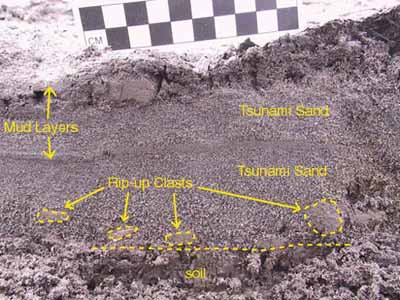
Tsunami deposit at La Quinta overlying agricultural soil. A thin layer of mud divides the deposit into two distinct layers. A mud cap also covers the surface of the deposit. Note mud rip-up clasts above soil in bottom layer and mud rip-up beneath mud cap in top layer. Normal grading is clearly visible in the lower layer.
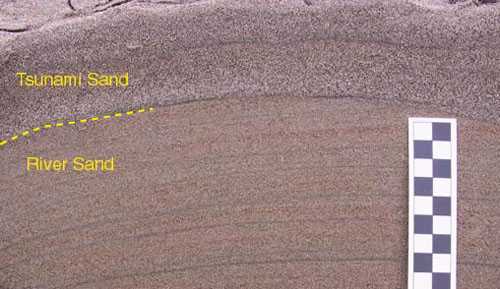
Tsunami deposit (gray sand) overlying river sand (reddish sand) at Playa Jahuay. Tsunami deposit has 2 layers while river sand has multiple layers. Layering in both tsunami and river deposits may be defined by a heavy mineral lag.
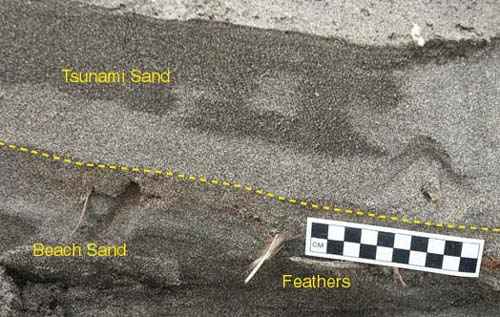
Tsunami deposit overlying beach sand at Playa la Chira. Tsunami sand is lighter gray color. Underlying beach sand is darker and contains feathers.

Tsunami deposit at Amecosupe. Coarse material at base was eroded from a roadbed. Note eroded trample structures in underlying sand, thin mud layer near top of deposit, and current ripples from return flow at surface.
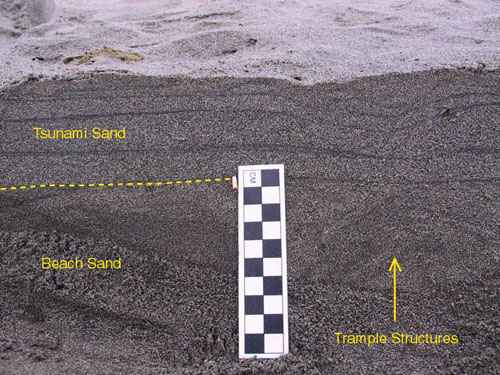
Layered tsunami deposit overlying trample structures at Amecosupe.
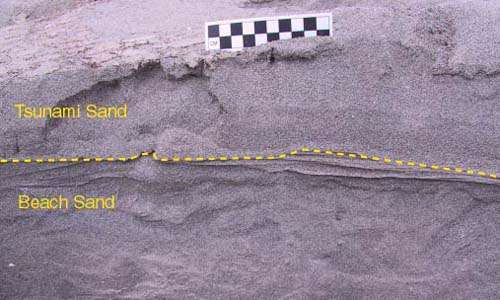
Tsunami deposit at La Bajada overlying trampled beach sand.

Tsunami deposit overlying mud layer at Pampa Grande.
